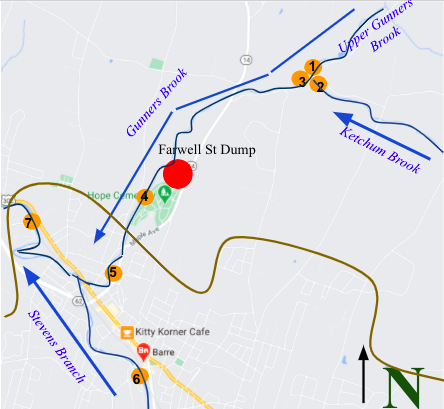
How do Tributary Junctions Affect Water Quality; Phosphorus, Nitrates and Other Constituents in a River Corridor
Emma Parizo
Impaired waterways are damaging ecosystems that are important for humans and other living organisms. The State of Vermont spent $66 million from 2016 to 2018 on clean water efforts in the Lake Champlain Basin, and more than $20 million in federal funds were allocated in 2019. Most water quality research in Vermont has focused on Lake Champlain and its direct inputs from rivers and water treatment plants. Less research has examined the effects of headwaters, and how tributary junctions and land use affect the downstream changes in water quality in this basin.
This project investigates three headwater rivers in Barre, Vermont that all lead to Lake Champlain. Water samples (n=21) were taken from seven sites on three separate days in Fall 2020. Phosphorus, nitrogen, pH, manganese, vanadium, and iron levels show that when one river has high levels of pollutants, the next river it joins will not have high levels due to the added tributary. For example, on 28-Oct-2020 nitrate (NO3-) levels dropped from 1.6 mg/L to 0.8 mg/L on Stevens Branch where the tributary joins. High levels of pollutants depend predominantly on other factors, including precipitation overland runoff, and land use.

